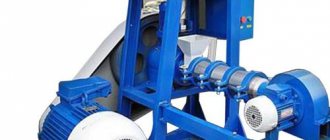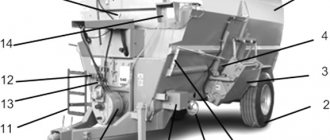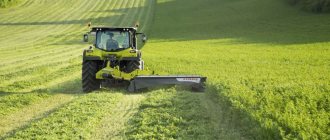April 5, 2022 views
Food security is frequently discussed in a number of global or European organizations. The projected growth of the world population by 2050 will be 9.5 billion people, during which the standard of living of the population will simultaneously increase, leading to the need for a constant increase in food production. The threat posed by climate change, which is associated with the loss of agricultural land and the resulting decline in agricultural production, is forcing producers to diversify production. Steadily rising prices for traditional feed grains (wheat) and soybeans, on the one hand, and stagnant selling prices for meat, on the other hand, are forcing producers to reduce production costs, while feeding efficiency is important. A number of ways to achieve this are currently being sought, and feed technology is one of them.
What is extrusion?
The term extrusion has been widely used for over 50 years. These are processes that involve mechanical grinding, mixing, heating the material under elevated pressure and then pressing through a slot to achieve mechanical and thermal processing, including possible molding. Extrusion is often called the "HTST" (High Temperature Short Time) method because it is a short-term exposure of the material to high temperatures (up to 200°C). Despite this high temperature, the short-term effect of extruding the feed does not harm the nutrients it contains and, if the process is set up correctly, the loss of nutritional energy and value is negligible.
Technologies for “opening” starch
Various technologies are used in practice to process grain in order to “open” starch. The thermal method (for example, infrared radiation, hot air treatment) involves the use of influencing factors such as temperature and duration of exposure. The hydrothermal method (for example, toasting) additionally uses moisture. The combination of hydrothermal processes (influencing factors: temperature, moisture, duration of exposure) with mechanical processing (influencing factors: pressure and shear force) is extrusion technology.
The principle of extrusion is explained by the concept itself. The verb "extrude" comes from Latin and means "to extrude, push out." The material is crushed in the extruder channel, depending on the type of device, by means of one or two screw-like shafts of various configurations (single or double shaft extruders) in translational motion and extruded through small holes at the end of the channel. In this case, depending on the device, high pressure is created in the extruder channel (possibly up to 100 bar). As soon as the product leaves the extruder, there is a sudden decrease in pressure and expansion of the extruded material. Thanks to the action of shearing force and pressure, the specific heat generated during the process and the expansion effect, the structure of the material changes significantly and a characteristic, visually identifiable texture is achieved.
When processing the material in this way, high temperatures of up to 200°C can occur, although the action time is very short (a few seconds). Because of this, this extrusion process received the abbreviation “HTST” (high temperatur, short time).
The next difference is the conditioning of the material before extrusion and the introduction of moisture under pressure. When “wet extrusion” with water and pressure supplied through air conditioning equipment for humidification (up to 30% moisture in the material), drying of the material after extrusion is mandatory.
This processing step, which is very energy-intensive and therefore cost-intensive, has not yet been widely used in extrusion technology for the production of raw materials for feeding farm animals.
A decisive development in the well-known extrusion technology was the emergence of the so-called opticon® technology. This technology allows for targeted, intensive structure changes to be achieved in a manner similar to the “wet” extrusion process described above. But thanks to the new concept, there is no need for energy-intensive drying of the processed material - at the end it is enough to simply cool the product. This technology allows you to change the ratio of different grain crops in the final product and, thus, save on storing extruded grains of different types separately in a feed mill or agricultural enterprise.
Why extrusion?
Extrusion and other hydrothermal methods of processing feed raw materials are aimed at improving the nutritional, hygienic or physicochemical properties of raw materials.
Main advantages of extrusion:
- Radical reduction in anti-nutrients and natural toxins. This processing method is very effective in breaking down a number of antinutrients, for example, radically reducing urease activity in soybean processing. Reducing the trypsin inhibitor content is very beneficial for the diet of monogastric animals.
- Sterilization - The temperature and pressure in the extruder kills bacteria, mold and other unwanted organisms and pests. The formation of mold and subsequent production of mycotoxins stops, which extends shelf life.
- Gelatinization of starch - Starch is a common and important component of feed. During extrusion, the starch granules are damaged (so-called starch gelatinization), which improves digestibility.
- Homogenization - a homogeneous structure is created in the extruder from all components of the feed, which makes it impossible for animals to selectively eat individual components.
- Formability of the material - by molding through a die (the final stage of the extrusion process), the food mass can be produced in various shapes and sizes (for example, for dogs and other pets).
- Expansion - due to the rapid drop in pressure at the exit of the extruder, strong evaporation occurs and, consequently, the destruction of cell structures. The material becomes voluminous, its density decreases and a porous structure (large area) is formed, more favorable for enzymatic digestion in the digestive tract.
How does extrusion affect starch conversion?
Starch is the main source of energy in most complete feed mixtures. During the extrusion process, the starch is gelatinized and thus improves its digestibility. A study carried out by Farmet in collaboration with the Czech Agricultural University confirmed the positive impact of the extrusion process on the feed value of wheat.
Thus, the use of extruded grains in broiler feed increases the availability of energy from rapidly digestible starch, which leads to a faster increase in blood glucose levels and, consequently, less feed consumption. This improves the absorption of nutrients and thereby reduces energy consumption.
Since the amount of energy per kilogram of feed increases as broilers age, this extrusion effect plays an important role in increasing the nutritional value of the feed fed.
As part of the study of the effect of extrusion on the feed value of wheat, fattening trials were carried out on ROSS 308 broilers. The experiment included chickens aged 1 day, and the total duration of the experiment was 35 days. The experimental group was given a mixture containing extruded wheat, the control group was fed a mixture of the same composition, but only the wheat grain was crushed.
Carcass slaughter weight was approximately 2 kg for both groups and no statistically significant difference was found. However, regarding feed conversion, the differences were significant in favor of the experimental group. The results presented in the table below show that for the entire feeding group with extruded wheat the conversion was 68 g lower.
Table 1 - Comparison of feed conversion in broiler chickens (kg of feed per kg of weight gain) depending on the age of the chickens
Table 1 - Comparison of feed conversion in broiler chickens (kg of feed per kg of weight gain) depending on the age of the chickens
| Until the 10th day | 10-20 days | 20-35 days | The entire fattening period | |
| Conversion with extruded wheat | 1,343 | 1,369 | 1,416 | 1,395 |
| Conversion with shredded wheat (non-extruded) ground | 1,282 | 1,446 | 1,507 | 1,463 |
| Difference | +0,061 | -0,077 | — 0,091 | -0,068 |
Science plus production
Classic feed crops (such as barley, wheat, rye, oats and others) are received by animals in their pure form (whole, ground, flattened grain) or as part of feed mixtures or combined feeds. The extrusion method for the production of feed is considered one of the resource-saving and promising areas for the development of livestock farming.
Before processing begins, raw materials undergo additional purification to remove weeds, minerals and other impurities.
Elements that are difficult to digest, such as fiber, are subjected to intensive grinding, which makes it possible to increase its digestibility and absorption. The influence of anti-nutrient components present is reduced. Due to the short duration of processing, valuable elements are preserved: amino acids, fats, vitamins and others.
Farmers often use extruded feed when fattening young animals, highly productive animals and breeding stock. The production technology uses both pure grain and a grain mixture, properly prepared for processing. This allows you to balance the diet of a specific group of animals and achieve maximum productivity.
Read on topic: KazATU scientists produce fertilizers from poultry farm waste
The production of extruded feed is carried out using special machines - extruders. Purchasing, installing an extrusion line, and training a specialist is only half the battle; then you need to develop your own production technology. This is where science comes in.
Scientists of the Kazakh Agrotechnical University named after. S. Seifullina and scientific staff of NFT-KATU LLP are developing resource-saving technologies for the production of multifunctional feed and feed additives to increase the productivity of animals and birds and obtain high-quality and safe products from them. Thus, modern technologies are introduced into production with scientific support.
How does extrusion affect protein conversion?
The main sources of protein in animal feed are oilseeds and legumes, especially soybeans and rapeseed. Oilseed extrusion technology combined with presses offers purely mechanical processing with high oil yields without the use of chemical solvents.
However, changes in the temperature profile can affect the digestibility of proteins in the tract of ruminants. The conversion of protein fractions can be assessed using the CNCPS system. In this system, the protein is divided into the following fractions:
- A1 - ammonia,
- A2 - protein fractions and other nitrogenous substances that are completely decomposed in the rumen,
- B1 is a slowly degraded protein fraction in the rumen, partially passing into the small intestine,
- B2 - does not decompose in the rumen and completely enters the small intestine,
- C-unproductive - indigestible fraction.
A Farmet study on rapeseed and its extrusion technology showed that during extrusion the proportions of fractions B1 and B2 increase compared to fraction A2. As temperatures increase, this tendency increases, that is, the so-called bypass protein increases, which increases the value of proteins for ruminants.
An example of the effect of extrusion temperature on increasing the content of fractions B1 and B2 is shown in the figure below (for oilseed rape). The extrusion technology has the same effect (increasing the proportion of bypass protein) on all sources of vegetable protein (for example, soybeans, lupine, peas).
Figure 1. Dependence of the growth of protein fractions B1 + B2 on extrusion temperature
Destruction of molecular structure
In order to understand how the “starch opening” occurs in grain, it is necessary to look at its morphology and chemical structure. Cereals contain, depending on the type, from 40 to 60 percent starch. Purely chemically, starch can be divided into amylose and amylopectin.
Amylose (20 to 30% of the total starch in cereals) consists of linked glucose molecules that, when combined, form long, tortuous chains in a helical shape.
Amylopectin (70 to 80% starch) is a branched polysaccharide in which from 2,000 to 200,000 glucose molecules are linked.
The amylose to amylopectin ratio, chain length and degree of branching of glucose chains significantly influence the technical properties of various types of cereals and starch digestibility.
In the endosperm of the grain, starch is in the form of individual granules, the size of which ranges from 2 to 200 μm. These starch grains are very clearly visible under an electron microscope (1000x magnification) (see photo below left). They are quite stable due to internal hydrogen bonds.
The branched molecular chains of amylopectin can create semicrystalline and crystalline regions in these granules with unbranched amylose molecules. These tough organic structures do not break down in water and, in their natural, unpulverized form, have significant resistance to degradation by enzymes.
Thanks to intensive mechanical-hydrothermal processing of grains, these structures are changed to the molecular level, the starch is “opened”. The main effect is a significant increase in the surface area of the starch granule and extensive breakdown of amylopectin and amylose. The change in structure is also very clearly visible under a microscope. Typical starch grains are broken down after processing and mostly fused into flat, melted-plastic-like globules (see photo below right).
For feeding piglets, it is very important that, along with the size and shape of starch grains, it is possible to vary their internal structure (crystalline, amorphous, jelly-like areas) and the type of grain - wheat, barley and corn. Here, post-harvest processing of grains has an increasing influence.
Thus, research in the field of grain studies shows that a change in the structure of starch occurs in corn grains during drying. Corn, due to the significantly higher percentage of moisture in the grain during harvest compared to wheat and barley, has to be dried much more intensively. Because of this, starch acquires even worse properties for digestion through the action of enzymes. This, along with others, is the reason why unprocessed corn starch is poorly digested by young piglets, compared to, for example, unprocessed wheat starch. Therefore, technical “opening” plays a big role especially for increasing the digestibility of corn starch.
conclusions
The current trend toward increased feed conversion and lower energy prices favors hydrothermal feed processing (which also includes extrusion).
Optimizing the entire process offers a way to reduce energy consumption and improve the quality of the final product, resulting in lower operating costs and a path to success.
In recent years, the development of extrusion has made great strides, especially in the areas of control automation and process energy optimization. Optimizing the process in terms of the nutritional value of the extrudate (to increase efficiency) still offers many opportunities to improve efficiency and will be a subject of future research.
Author of the article: Based on materials from the Farmet company: Dipl. Eng. Michal Kavalek, Ph.D., Farmet AG; Dipl. Eng. Vladimir Plachy, Ph.D., Czech Agricultural University in Prague. Translation by Elena Babenko especially for soft-agro.com.
I look forward to your feedback and comments. Thank you very much!
Found this material useful? Share with colleagues on social networks or send the link directly to your email!
Subscribe to our telegram channel to be the first to receive notifications about the release of new materials.
Telegram channel →
Facebook In Contact LinkedIn Email











